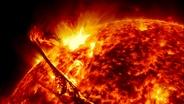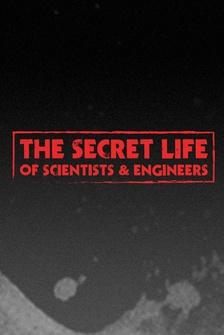- [Narrator] The dance between Earth, moon and sun is predictable, but the sun itself and its corona are chaotic.
Coronal mass ejections can disrupt our power supplies and destroy our communications technologies.
So learning how to predict coronal mass ejections is the Holy Grail of solar physics.
- [Scientist] The sun is not some static unchanging ball of gas, right?
It is ejecting parts of itself into the solar system.
The solar corona is this dynamic and ever-changing and incredibly beautiful halo of plasma around the sun that's so important in so many ways.
- [Narrator] The lines of plasma in the sun's corona are vast, they would dwarf the Earth.
The force that drives their shape and motion is the sun's magnetic field.
Earth also has a magnetic field.
It's formed by our planet's spinning liquid metal core and gives us our magnetic north and south poles.
But the sun has even stronger magnetic fields created by the movement of electrically charged particles churning beneath the surface.
(dramatic music) Because the plasma is moving faster in some regions, these fields bend and twist until some break through the sun's photosphere into the corona, where they form giant arches called corona loops.
Because these magnetic fields trap electrically charged particles, they show up as the bright lines and loops of plasma we see in the corona.
But these field lines can snap.
- The plasma is now free of its chains, its anchors from the sun, and it's free to blast off into space.
- [Narrator] In a coronal mass ejection, the corona can throw a billion tons of plasma out into space at speeds of almost 2,000 miles per second.
When a coronal mass Ejection heads our way, Earth's own magnetic field normally deflects it, protecting the planet but a large coronal mass ejection can overwhelm our magnetic defenses with devastating consequences.
- The coronal mass ejection can stream toward the Earth and disrupt our technologies, burn out power stations, damage sensors on satellites wreaking havoc.
So we really need to be able to predict these things.
- [Narrator] Soon a new NASA mission called Punch will launch four cameras that will orbit Earth to continuously map not only how the solar wind flows towards and around our planet, but also across the entire solar system.
- We synchronize them so they're snapping pictures at the exact same time to image those clouds of material in all directions in three dimensions as they streak across the solar system sweeping out and past us.
With a system like Punch, we would be able to track the events all the way across the solar system, and this is revolutionary, we expect to be able to greatly improve forecasting of space weather.
(gentle music)














